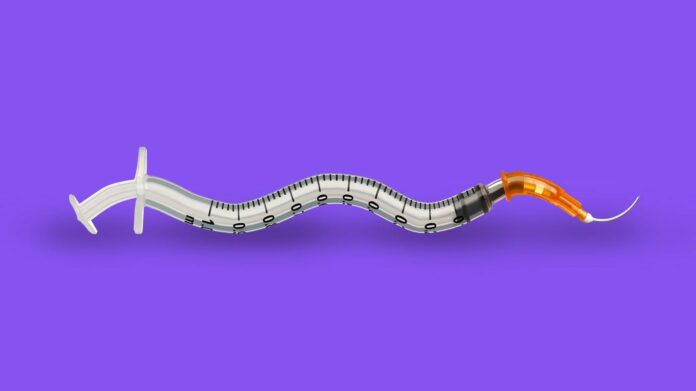The first coronavirus vaccine may arrive soon, but it’s unlikely to be the knockout punch you may be hoping for.
Why it matters: The end of this global pandemic almost certainly rests with a vaccine. Experts caution, however, that it’s important to have realistic expectations about how much the first vaccines across the finish line will — and won’t — be able to accomplish.
Where it stands: Work on a coronavirus vaccine is moving at an unprecedented pace. There are nearly 200 candidates in development, 27 are being tested in humans and a handful are already in an advanced phase of clinical trials.
- Each new bit of positive news out of that effort makes the pie-in-the-sky best-case scenario — that one of these products will prove out and win at least an initial nod from the FDA by early next year — seem more plausible.
Yes, but: First-generation vaccines often aren’t the ones that stop a new virus in its tracks, and experts’ hopes for an initial coronavirus vaccine are much more modest.
- “Right now, we just need something that’s going to mitigate the damage this virus causes,” said Amesh Adalja, an infectious-diseases expert at Johns Hopkins University. “Maybe it doesn’t prevent you from getting infected, but it prevents you from getting hospitalized, or prevents you from dying … that would be huge.”
How it works: Some vaccines, like the one for measles, mumps and rubella, produce near-complete and long-lasting immunity. Others, like the annual flu shot, are important tools to help contain a virus but don’t achieve “sterilizing immunity.”
- It’s not yet known how much protection any of the potential coronavirus vaccines might provide, or how long it would last.
- “It’s hard to make vaccines against coronaviruses,” said Mark Poznansky, an infectious-disease specialist at Massachusetts General Hospital. “It doesn’t mean its not possible but it is a challenge, especially with COVID-19, where we don’t yet understand the inflammatory response to the virus and what part of the immune response is critical to prevent infection.”
- While the initial evidence for COVID-19 vaccines seems promising, second- and even third-generation products will likely target more of the virus and, hopefully, generate stronger and longer-lasting immunity than the first few vaccines will offer, Poznansky said.
Vaccinating enough people to get safely back to our old, communal habits will also pose more practical challenges.
- Even with a jump start on manufacturing, which is happening now, there won’t be enough supply, at least at first, to address the sheer scale of a global pandemic. So we need some kind of system to distribute the global supply, and then to prioritize who in the U.S. gets our doses.
- And if distrust in a vaccine stops large numbers of people from getting it, then the U.S, may not achieve the “herd immunity” that prevents widespread outbreaks.
Two of the leading candidates — drugs under development by Oxford University and the U.S. biotech firm Moderna — require patients to get two shots.
- So if you want to vaccinate 300 million people, you’ll need 600 million doses. And getting 300 million doses will already be a tall order.
The bottom line: Even after a vaccine becomes available, the coronavirus may still hang around, infect and even kill people. The numbers would just be lower.
- That may not be what the quarantine-weary public is imagining, but experts say it’s a realistic expectation — and would be an incredible step forward.






